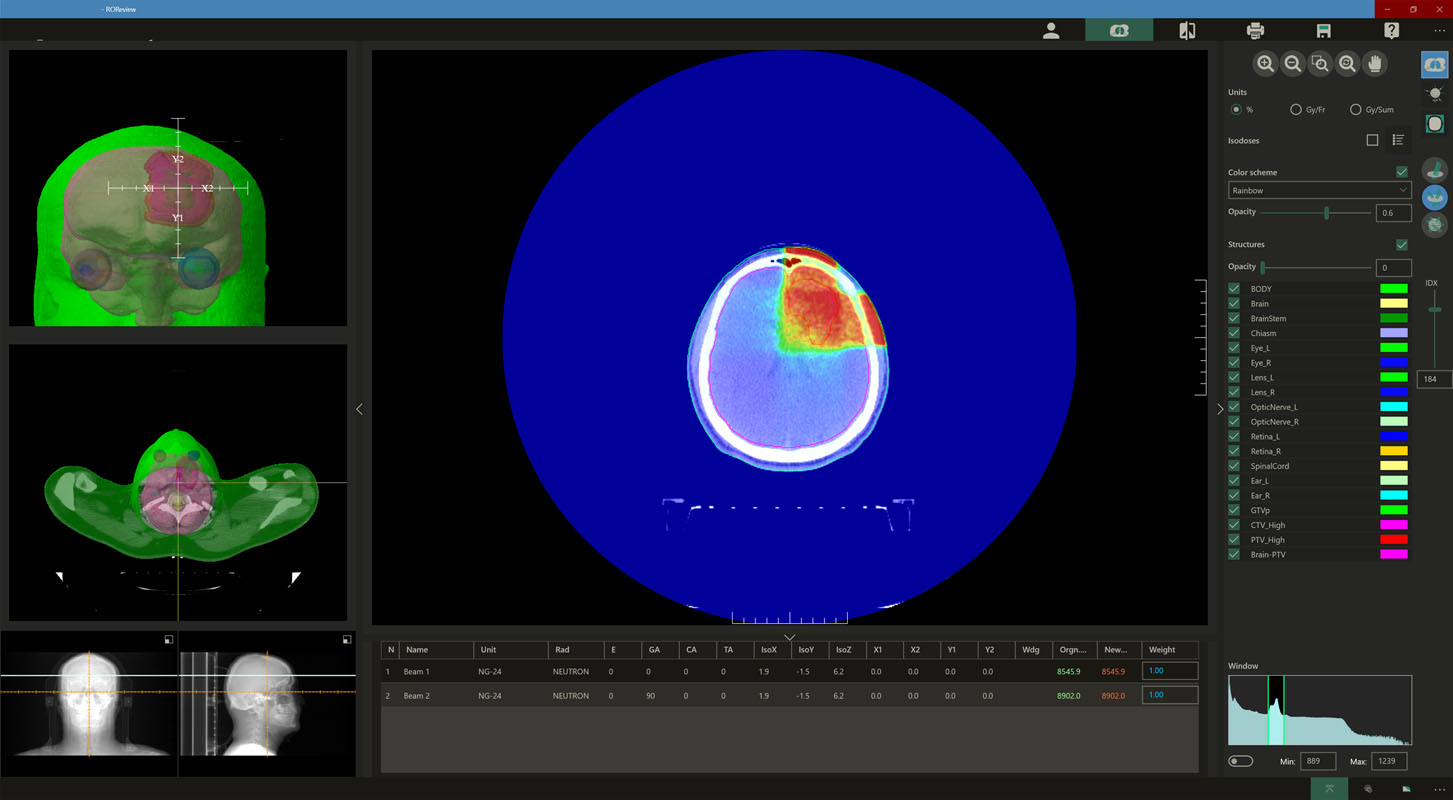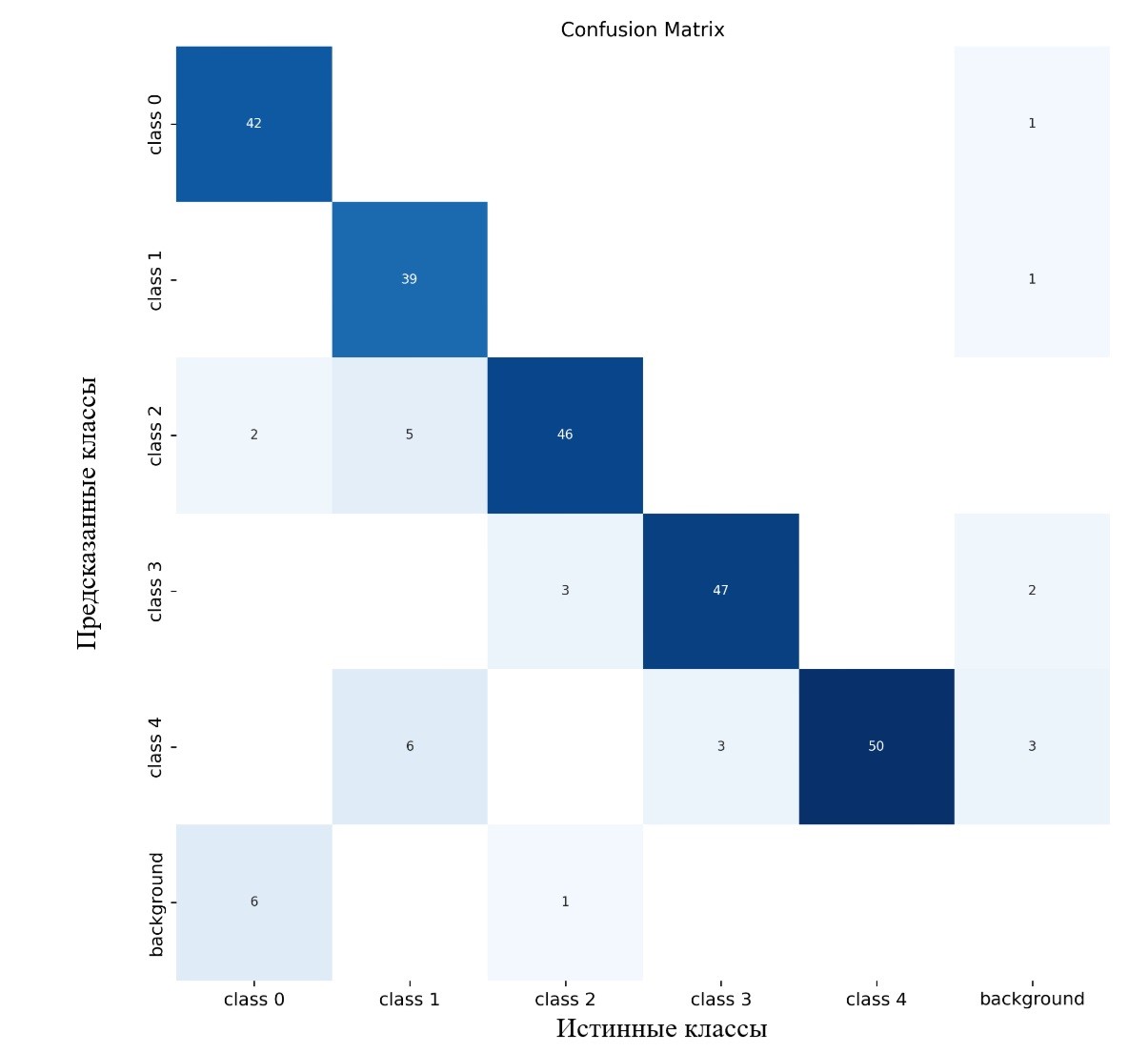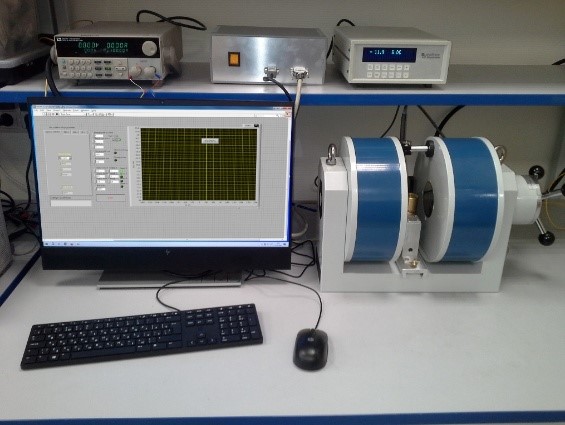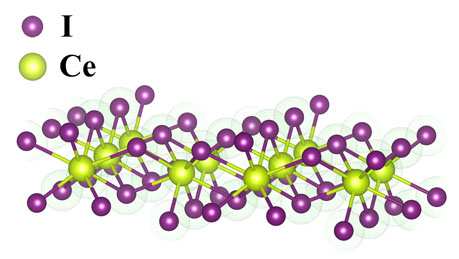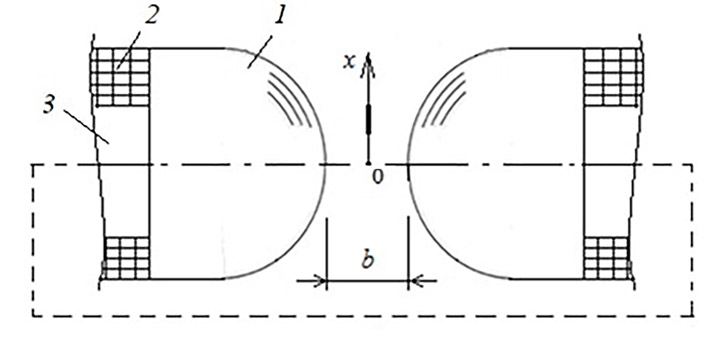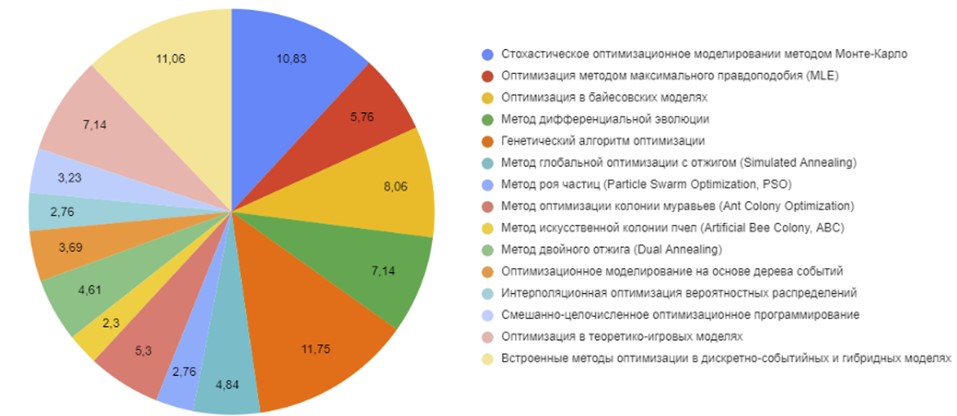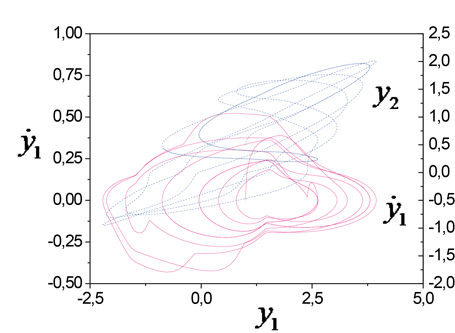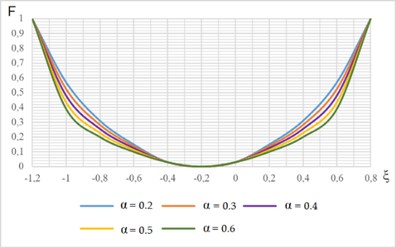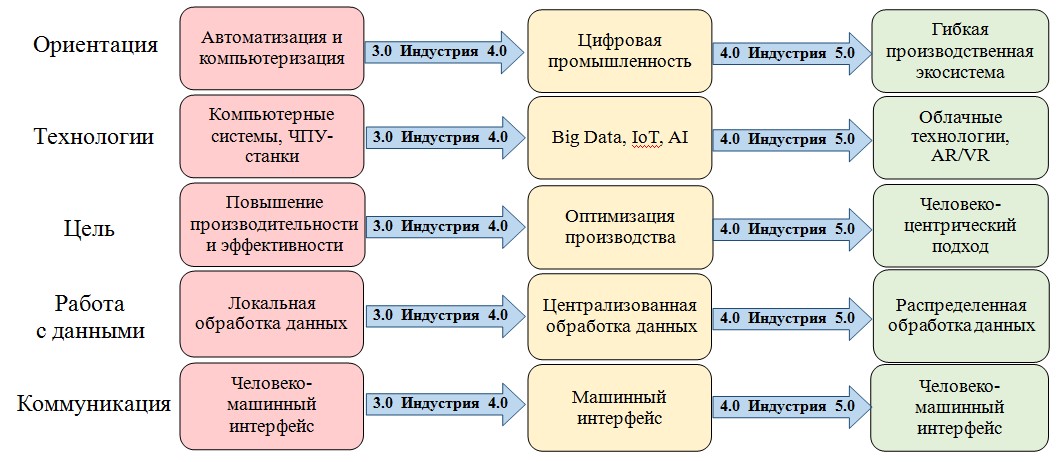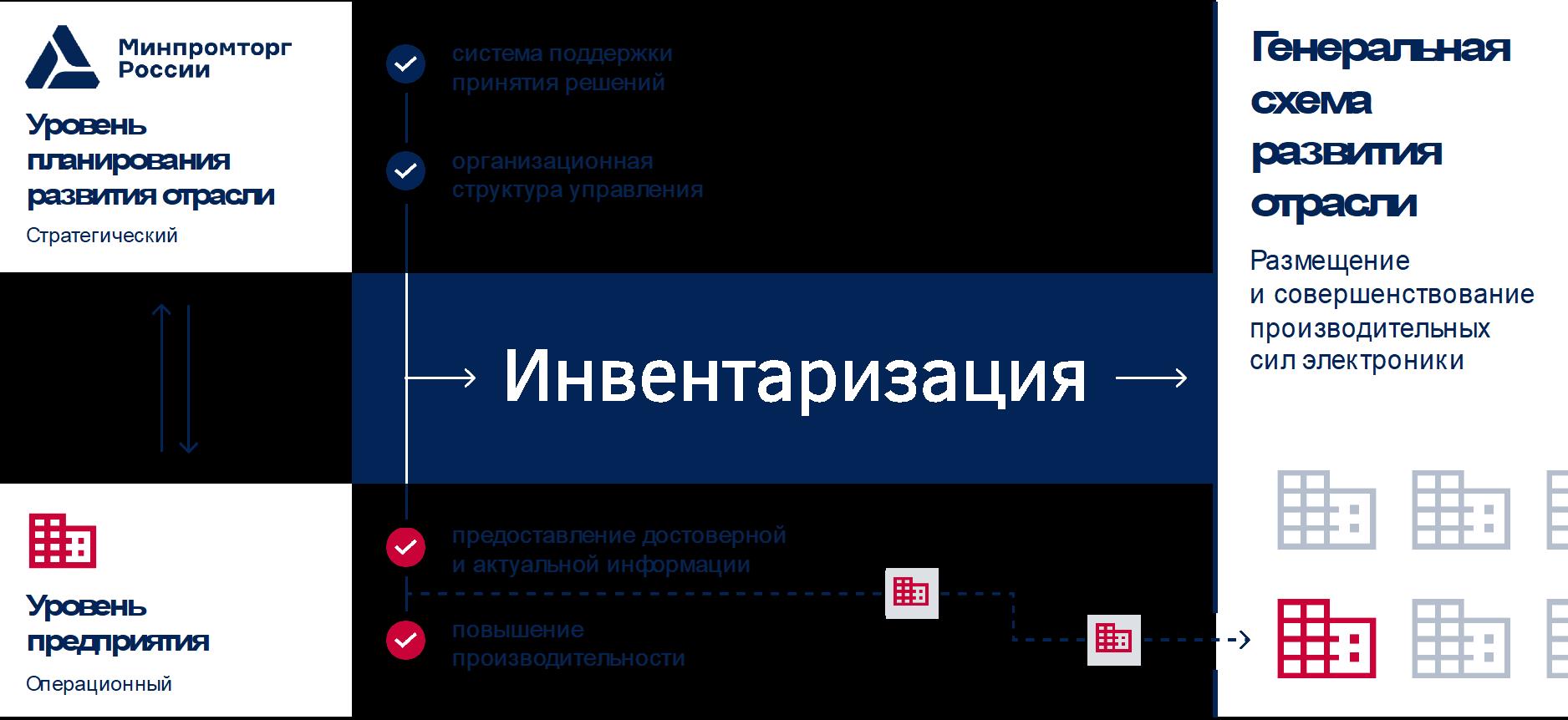INFORMATION SYSTEMS. COMPUTER SCIENCES. ISSUES OF INFORMATION SECURITY
- An R&D project aimed at technological support of radiation treatment planning systems coupled with the creation of a mathematical framework for estimating the absorbed dose for radiobiological and medical therapeutic purposes was developed.
- The developed suite decides tasks in the realm of radiobiological research conducted using radiation beams of different qualities. Additionally, it serves as a foundation toolkit for developing radiotherapy planning systems for both existing and new therapeutic facilities, as well as software packages for estimation of the long-term effects of the conducted radiotherapy.
Objectives. Simulation of the absorbed dose is an essential part of radiation therapeutic treatment, performed not only for its correct evaluation, but also for assuring quality control and retrospective evaluation of the provided cure. From the technological point of view, strict requirements are imposed on the software applications and hardware units that support a successful decision-making process before, during, or after the provided therapy. This paper reports an R&D project aimed at technological support of radiation treatment planning systems coupled with the creation of a mathematical framework for estimating the absorbed dose for radiobiological and medical therapeutic purposes.
Methods. Adedicated automated software suite for executing multipurpose Monte Carlo simulations was developed. The suite is backed up with virtualization techniques for structured hardware access, data intercommunication using diverse connection channels, various physical interaction engines, and coupled end-user software.
Results. The developed suite facilitates a wide array of tasks in the realm of radiobiological research conducted using radiation beams of different qualities. Additionally, it serves as a foundation toolkit for developing radiotherapy planning systems for both existing and new therapeutic facilities, as well as software packages for estimation of the long-term effects of the conducted radiotherapy.
Conclusions. The developed programming and computing suite is an effective tool for organizing a specialized environment for multipurpose estimation of the absorbed dose of radiation for therapeutic applications of radiation beams of different qualities. The suite can be updated and extended upon end-user needs and modified by skilled software developers for specific purposes.
MODERN RADIO ENGINEERING AND TELECOMMUNICATION SYSTEMS
- The problem of applying neural networks for object detection in radar images and their recognition under conditions of limited computational resources is important.
- The aim was to investigate the speed and recognition quality of YOLO neural network models in solving object detection and classification tasks in radar images.
- The study compared the speed and recognition quality of the 5th, 8th, and 11th generation YOLO neural network models with varying numbers of trainable parameters (nano-, small-, medium-, large-, and extra-large-sized).
- The research confirmed the feasibility of running YOLO neural network models on a microcomputer with a neural processor, provided that the computational resources of the microcomputer match the computational requirements of the neural networks.
Objectives. The paper addresses the problem of applying neural networks for object detection in radar images and their recognition under conditions of limited computational resources. The aim was to investigate the speed and recognition quality of YOLO2 neural network models in solving object detection and classification tasks in radar images in order to evaluate the feasibility of their practical implementation on a microcomputer with a neural processor.
Methods. Machine learning, object detection, and classification techniques were used to detect and classify objects in a radar image.
Results. The study compared the speed and recognition quality of the 5th, 8th, and 11th generation YOLO neural network models with varying numbers of trainable parameters (nano-, small-, medium-, large-, and extra-largesized) to assess their potential use on a microcomputer with a neural processor. As a result of comparing various YOLO models using evaluation metrics, YOLOv11n (0.925), YOLOv5l (0.889), and YOLOv11s (0.883) showed the highest precision metric; YOLOv5n (0.932), YOLOv11n (0.928), and YOLOv11s (0.914) showed the highest recall metric; YOLOv11s (0.961), YOLOv5n (0.954), and YOLOv11n (0.953) showed the highest mAP50 metric; and YOLOv5n (0.756), YOLOv11s (0.74), and YOLOv5l (0.727) showed the highest mAP50-95 metric.
Conclusions. The conducted research confirmed the feasibility of running YOLO neural network models on a microcomputer with a neural processor, provided that the computational resources of the microcomputer match the computational requirements of the neural networks. The ROC-RK3588S-PC microcomputer (Firefly Technology Co., China) provides up to 6 TOPS of performance, allowing the use of YOLOv5n (7.1 GFLOPs), YOLOv11n (6.3 GFLOPs), and YOLOv11s (21.3 GFLOPs) models.
MICRO- AND NANOELECTRONICS. CONDENSED MATTER PHYSICS
- An automated setup for the precision measurement of the dependence of magnetostriction of ferromagnetic plates on a magnetic field in the range of ±5 kOe providing an improved strain resolution order of magnitude was developed.
- The developed setup provides an accuracy of the magnetostriction measurement of ferromagnetic plates up to 10−7 in the range of magnetic fields of ±5 kOe, which is an order of magnitude higher than known methods.
- The setup also allows measuring the electric and piezoelectric deformation of materials depending on the applied electrical voltage in the range of ±500 V.
Objectives. Knowledge of the dependence of magnetostriction of various ferromagnetic materials on the magnetic field is important for studying the magnetoelectric effect in composite structures, in particular for calculating the shape of the field dependence of piezomagnetic moduli and for calculating magnetoelastic characteristics. However, the typical resolution level of known strain gauge setups for measuring magnetostriction is about 10−6, which is insufficient to obtain detailed information on the piezomagnetic coefficients of the materials under study. The paper describes the development of an automated setup for the precision measurement of the dependence of magnetostriction of ferromagnetic plates on a magnetic field in the range of ±5 kOe providing an improved strain resolution order of magnitude.
Methods. The setup uses film strain gauges included in a Wheatstone bridge excited by alternating current. Thanks to the applied method of signal frequency shift, as well as the use of a low-noise preamplifier and temperature stabilization of the measuring cell, it was possible to reduce the level of noise referred to the input and zero drift of the measuring circuit.
Results. The developed setup provides an accuracy of the magnetostriction measurement of ferromagnetic plates up to 10−7 in the range of magnetic fields of ±5 kOe, which is an order of magnitude higher than known methods. The setup also allows measuring the electric and piezoelectric deformation of materials depending on the applied electrical voltage in the range of ±500 V. The measurement results can be used to more accurately calculate the field dependencies of the piezomagnetic and piezoelectric coefficients of materials, including materials with low magnetostriction, such as various ferrites, hematite, yttrium iron garnet, etc.
Conclusions. The method of alternating excitation of the measuring bridge in combination with other measures can be used to increase the deformation resolution to about 10−7.
- A theoretical calculation of the electronic structure of a CeI3 2D-magnetic material, taking into account the Hubbard repulsion at the site, the partial density of electronic states, and the distribution of spin and charge densities was performed.
- The calculated densities of the electronic states and the bandgap values for the ferro- and antiferromagnetic configurations of the material were found to be 1.98 and 2.08 eV, respectively.
- The calculations based on the Hubbard correction clearly demonstrated the presence of a bandgap, which is typical of semiconductor materials.
Objectives. In comparison with three-dimensional structures, two-dimensional (2D) magnetic materials are promising for use in spintronics and magnetic storage devices due to their exceptional characteristics and qualitatively different physical properties. Theoretical studies into 2D magnetic structures pave the way for the development of new compounds based on experimental data. In this work, we carry out a theoretical calculation of the electronic structure of a CeI3 2D-magnetic material, taking into account the Hubbard repulsion at the site, the partial density of electronic states (DOS), and the distribution of spin and charge densities.
Methods. Calculations of the electronic structure of the CeI3 monolayer were performed using density functional theory (DFT) and the Hubbard Uscheme in the VASP software environment. The Dudarev method was used to account for the Hubbard correction.
Results. The calculated densities ofthe electronic states and the bandgap values for the ferro- and antiferromagnetic configurations of the material were found to be 1.98 and 2.08 eV, respectively. To assess the influence of correlation effects, the DOS was calculated both with and without the Hubbard correction. It was determined that the system in the ground magnetic state exhibits an antiferromagnetic ordering of the spin subsystem. The difference in the total energies of the antiferro- and ferromagnetic configurations was 2.8 meV per formula unit.
Conclusions. The calculations based on the Hubbard correction clearly demonstrated the presence of a bandgap, which is typical of semiconductor materials. The obtained bandgaps for the ferromagnetic and antiferromagnetic configurations of the system belong to the visible light range, which offers the opportunity of using 2D CeI3 as a luminescent material in devices with a magnetically controlled emission. To assess the influence of correlation effects, the DOS was calculated both with and without the Hubbard correction. The obtained results agree with those obtained in experimental studies of cerium compounds. The consideration of correlation effects and spin polarization in the presented calculations forms the basis for further research into the magnetic properties of the CeI3 monolayer for technological applications in the field of 2D magnetism.
ANALYTICAL INSTRUMENT ENGINEERING AND TECHNOLOGY
- The research of magnetic susceptibility of small-volume objects is carried out using an original method, which includes finding the coordinate characteristic of the induction of the field B through direct step-by-step measurements by the Hall sensor in the interpolar space along the line of action of the ponderomotive force to provide a basis for obtaining the coordinate characteristic of the gradient.
- In magnetometers using hemispherical poles of increased diameters 157 and 184 mm, mutually disconnected from one or another by the distance, the desired key dependencies of magnetic induction B were experimentally obtained (with a step-by-step distance x from the center of symmetry of the interpolar space along the line of action of the ponderomotive force) to provide the dependence of the gradient gradB = dB/dx.
Objectives. The work sets out to explain the expanded capabilities of new magnetometers by conducting appropriate studies. In order to determine the magnetic susceptibility of small-volume objects, ponderomotive and magnetic-rheological magnetometers with hemispherical pole pieces are used to create the magnetic field required for a limited working zone.
Methods. The research is carried out using an original method, which includes finding the coordinate characteristic of the induction of the field B through direct step-by-step measurements by the Hall sensor in the interpolar space along the line of action of the ponderomotive force to provide a basis for obtaining the coordinate characteristic of the gradient.
Results. In magnetometers using hemispherical poles of increased diameter D: 157 and 184 mm, mutually disconnected from one or another by the distance b, the desired key dependencies of magnetic induction B were experimentally obtained (with a step-by-step distance x from the center of symmetry of the interpolar space along the line of action ofthe ponderomotive force) to provide the dependence ofthe gradient gradB= dB/dx. The characteristic inflection of each of the curves B from x and corresponding individual extremum of the following curves dB/dx from x, in the vicinity of which the values of dB/dx are practically stable, meets the requirement of determining the dislocation of the executive (working) zone such that the inhomogeneity of the field is almost constant.
Conclusions. Coordinates of executive zone dislocation are obtained from established and generalized dependencies B from x and dB/dx from x. To calculate these coordinates, which depend on D and b but do not depend on the magnetizing force of the winding, the corresponding analytical (phenomenological) expressions of power and logarithmic form are obtained. The possibility of using these expressions to identify the executive zone of magnetometers without resorting to additional series of experiments is shown. The expediency of using hemispherical pole pieces of increased diameter is also demonstrated. On this basis, the length of the executive zone can be increased to conduct studies with samples of a wider range of sizes.
- The dependencies of inrush current and starting speed on the number of turns in each winding of the upgraded brushless direct current (BLDC) electric motor were obtained.
- A mathematical model for the upgraded BLDC motor was developed, which showed good agreement with the experimental results.
- There exists an interval of the number of turns in each of the windings of a BLDC motor, where the motor demonstrates its optimum efficiency. Inrush current and supply voltage were found to be the parameters that are sufficient for determining the basic starting characteristics of a BLDC motor.
Objectives. This work is aimed at determining the optimum number of turns in each winding and the effect of winding and power supply parameters on the starting characteristics of an upgraded brushless direct current motor (BLDC motor).
Methods. A full-scale experiment on a test bench consisting of an upgraded BLDC motor, a power supply source, and a speed controller was conducted. Methods of mathematical simulation, linear programming, and approximation were also applied.
Results. During the experiments, the dependencies of inrush current and starting speed on the number of turns in each winding of the upgraded BLDC motor were obtained. It was experimentally established that the number of turns in the windings has a limiting value, which is confirmed by either the intersection of the curves of inrush current and starting speed, orthe disappearance of the functional dependence between the inrush current and motor speed. A mathematical model for the upgraded BLDC motor was developed, which showed good agreement with the experimental results. Using this mathematical model, the optimum number of turns in each of the motor windings and the efficiency of a BLDC motor can be determined. A parametric model for determining the motor starting speed by the values of inrush current and battery voltage at the number of turns in the winding from 8 to 14 was proposed. The developed models make it possible to determine the motor characteristics at the design stage.
Conclusions. There exists an interval of the number of turns in each of the windings of a BLDC motor, where the motor demonstrates its optimum efficiency. Inrush current and supply voltage were found to be the parameters that are easily measurable in practice and sufficient for determining the basic starting characteristics of a BLDC motor.
MATHEMATICAL MODELING
- The analysis and classification of existing optimization methods allowed the authors to identify their advantages, disadvantages, and application features, as well as to determine the relationship between theoretical concepts and their practical implementation.
- Various optimization approaches were considered, covering both classical and modern simulation methods.
Objectives. The authors conduct an analytical review of available optimization methods and simulation tools to identify their key features, effectiveness, and possible applications. The aim was to form an integrated picture of modern approaches, which may facilitate decision making when selecting the most appropriate method for a particular task. The key objective was to review and classify various optimization tools, which of theoretical and practical value for developers of new models.
Methods. Scientific publications and analytical materials were retrieved from specialized databases and technical documentation libraries.
Results. The analysis and classification of existing optimization methods allowed the authors to identify their advantages, disadvantages, and application features, as well as to determine the relationship between theoretical concepts and their practical implementation. During the analysis, various optimization approaches were considered, covering both classical and modern simulation methods.
Conclusions. The importance of informed selection of optimization methods, which raise the efficiency and accuracy of simulation procedures, is highlighted. The results obtained indicate the need for further study and comparative analysis of the methods used in practice in order to establish their efficiency and applicability in various scenarios. Future research directions include experimental testing of the effectiveness of various approaches based on several models in order to determine their advantages and disadvantages for a more informed selection of the method suitable for a particular task.
- Considering the problem of identifying nonlinear decentralized systems under uncertainty, estimates have been obtained for the nonlinear part of the system satisfying the quadratic condition.
- The parametric identifiability of nonlinear decentralized systems has been confirmed.
- Algorithms for parametric and signal adaptive identification have been synthesized.
- A class of Lyapunov functions is proposed for evaluating the properties of an adaptive system with signal adaptation.
- The exponential dissipativity of processes in an adaptive system is demonstrated.
Objectives. The work set out to consider the problem of identification of decentralized systems (DS). Due to the increasing complexity of systems and a priori uncertainty, it becomes necessary to identify appropriate approaches and methods. In particular, this concerns the parametric identifiability (PI) of DSs. This condition can be explained in terms of the complexity of the DS and the presence of internal relationships that complicates the process of parametric estimation. Thus it becomes necessary to propose an approach to PI based on meeting the conditions of the excitation constancy that takes subsystem relationships into account. A class of nonlinear DS is considered whose nonlinearities satisfy the sectoral condition. By taking this condition into account a more rational approach can be taken to the analysis of the DS properties. The work additionally set out to: (1) develop an approach to the analysis of the properties of adaptive identification systems (AIS), taking into account the requirements for the quality of the processes and synthesis of adaptive parametric algorithms; (2) investigate the possibility of using signal adaptation algorithms in DS identification systems and searching for a class of Lyapunov functions for the analysis of AIS with such algorithms; (3) model the proposed methods and algorithms in order to confirm the results obtained.
Methods. The research is based on adaptive identification, implicit identification representation, S-synchronization of a nonlinear system, sector condition, and Lyapunov vector function methods.
Results. The conditions for the parametric identifiability of the DS at the output and in the state space are obtained. A criterion is proposed for estimating the stability of an AIS with signal adaptation. Algorithms for adjusting the parameters of an AIS are synthesized. The exponential dissipativity of the evaluation system is confirmed. The influence of interrelations in the subsystems on the properties of the obtained parameter estimates is considered. An adaptive algorithm can be described by a dynamic matrix system if a functional constraint is imposed on the AIS. The proposed methods and algorithms are modeled to confirm their validity.
Conclusions. Considering the problem of identifying nonlinear DS under uncertainty, estimates have been obtained for the nonlinear part of the system satisfying the quadratic condition. The parametric identifiability of nonlinear DS has been confirmed. Algorithms for parametric and signal adaptive identification have been synthesized. A class of Lyapunov functions is proposed for evaluating the properties of an adaptive system with signal adaptation. The exponential dissipativity of processes in an adaptive system is demonstrated.
- The results of a numerical experiment of the vibrational turbulence regime of the combustion process are presented as an interaction of the Rauschenbach resonance and laminar-turbulent transition.
- The resonance occurring during kinetic energy pumping, which implements the discharge of excess energy, is modeled on a variety of local equilibrium.
- In order to explain the new concepts that arise in this case, the resonance of the adiabatic hydrodynamic process is described. The possibility of avoiding resonance through the mechanism of dumping excess energy by turbulence of the laminar process is confirmed by the results of field experiments.
Objectives. The work considers critical processes involving excess energy, which include combustion and explosion, destruction of materials, crystallization, sintering of materials, etc. The results of numerical modeling of the turbulence of the combustion process (laminar–turbulent transition) and the patterns of phenomena associated with the laminar–turbulent transition in critical processes are studied.
Methods. Thermodynamic analysis was used to outline the trajectories of a system’s evolution and identify areas of laminar combustion stability during combustion, as well as metastable and labile regions where laminar combustion is unstable. An energy analysis approach was used to solve research problems involving the study of the redistribution of excess energy and the formation of distinctive structural features and parameters of the object and processes.
Results. The results of a numerical experiment of the vibrational turbulence regime of the combustion process are presented as an interaction of the Rauschenbach resonance and laminar–turbulent transition. The resonance occurring during kinetic energy pumping, which implements the discharge of excess energy, is modeled on a variety of local equilibrium. In order to explain the new concepts that arise in this case, the resonance of the adiabatic hydrodynamic process is described. The possibility of avoiding resonance through the mechanism of dumping excess energy by turbulence of the laminar process is confirmed by the results of field experiments.
Conclusions. The possibility of avoiding resonance in vibrational combustion due to disruption of the local equilibrium from the manifold by turbulence of the laminar process (approximation of local equilibrium) during pumping kinetic energy is demonstrated. During the combustion process, areas of laminar combustion stability are identified, along with metastable and labile areas where laminar combustion is unstable. However, this does not mean that signs of turbulence will not be observed in the stability region in its developed state: in these regions the diffusion of perturbations will blur them, whereas in the instability regions the process of negative (Cahn) diffusion will result in their concentration. It can be assumed that the instability regions of a homogeneous system are sources of perturbations, while the stability regions are sinks.
ECONOMICS OF KNOWLEDGE-INTENSIVE AND HIGH-TECH ENTERPRISES AND INDUSTRIES. MANAGEMENT IN ORGANIZATIONAL SYSTEMS
- In order to substantiate the necessity of transition to more promising models of production and development, the main distinguishing features of Industry 3.0, Industry 4.0 and Industry 5.0, are shown to be determined by unique orientations, technologies, objectives, approaches to working with data, and types of interfaces.
- The principles of Industry 5.0 apply to such factors of the Solow economic growth model as labor, capital, and technological progress, as well as human capital, natural resources, and the current technological level.
- The conducted expert survey exemplified the different contributions of various factors to Industry 5.0 production processes, including a decrease in the role of capital and labor, along with a concomitant increase in the importance of human capital, technological development, and natural resources.
Objectives. The study set out to substantiate the principles of Industry 5.0 as a necessary development for the classical model of economic growth proposed by Solow. An adapted and expanded Solow model is presented that takes into account technological progress, as well as social and environmental aspects, which influence long-term development and economic growth in the context of the Russian economy.
Methods. The main results of the work are obtained through a comparative analysis of the distinctive features of Industry 3.0, Industry 4.0, and Industry 5.0 in the context of an extended Solow model and an expert survey to assess the factors influencing economic growth.
Results. Inorder tosubstantiate the necessity oftransition tomore promising models ofproduction and development, the main distinguishing features of Industry 3.0, Industry 4.0, and Industry 5.0, are shown to be determined by unique orientations, technologies, objectives, approaches to working with data, and types of interfaces. The Russian economy is shown to be insufficiently prepared for the challenges of Industry 5.0. The principles of Industry 5.0 apply to such factors of the Solow economic growth model as labor, capital, and technological progress, as well as human capital, natural resources, and the current technological level. A survey of experts was conducted to assess the contribution of factors to production processes. The extended Solow model is a convenient tool for developing specific economic policy strategies based on the analysis of the interrelated factors.
Conclusions. The transition to Industry 4.0 technologies and subsequent planning for the implementation of Industry 5.0 technologies are necessary steps prior to the creation of an innovative and competitive economy. The conducted expert survey exemplified the different contributions of various factors to Industry 5.0 production processes, including a decrease in the role of capital and labor, along with a concomitant increase in the importance of human capital, technological development, and natural resources. This transition is evidenced by the presented numerical values for the Solow model coefficients for Industry 3.0, Industry 4.0, and Industry 5.0. Such Industry 5.0 priorities not only do not contradict economic growth, but can be expected to enhance it in the long term.
- The first step of a practically feasible implementation chain of digital technologies in electronic industry management should consist in an inventory of all reproduction factors.
- The presented rationale and detailed inventory program are compiled into a management block diagram in the format of digital twins of electronic industry enterprises.
Objectives. In the context of aggressive sanctions and unfriendly behavior of competitors, the multi-sectoral structure of the Russian economy is undergoing a process of rapidly restructuring to increase its competitiveness and import independence. The locomotive of this process is the electronic industry, whose products influence almost all aspects of the economy and society. This indicates the decisive role of the electronic industry in the lives of Russians. Thus, the inventorization of the productive forces of the electronic industry presented in this article constitutes a necessary step towards an effective and optimal solution to the problems at hand.
Methods. Classical methods of studying the socioeconomic relations of a complex system are used to consider the example of the electronic industry along with its sub-sectors, enterprises, and other organizational forms. The system analysis method is applied to management problems emerging at three levels: macro-, meso- and micro-level. The induction method of inventory management is supplemented by the deduction method representing an analytical movement from the electronic industry as an integral system to individual factors of the reproduction process.
Results. The first step of a practically feasible implementation chain of digital technologies in industry management should consist in an inventory of all reproduction factors. The presented rationale and detailed inventory program are compiled into a management block diagram in the format of digital twins of electronic industry enterprises.
Conclusions. The barriers facing the Russian electronic industry in the form of foreign competitors are not insurmountable. Sanctions and unfriendly actions of foreign competitors represent an opportunity the Russian electronics industry to overcome such barriers to significantly accelerate the scientific and technological, organizational, and managerial development of the industry. The country’s leadership and industry actors are aggressively implementing a program for developing the electronic industry as the locomotive of the entire economy. The inventory presented in this article will serve to facilitate a resurgence of the Russian electronics industry with respect to foreign competitors.
ISSN 2500-316X (Online)



